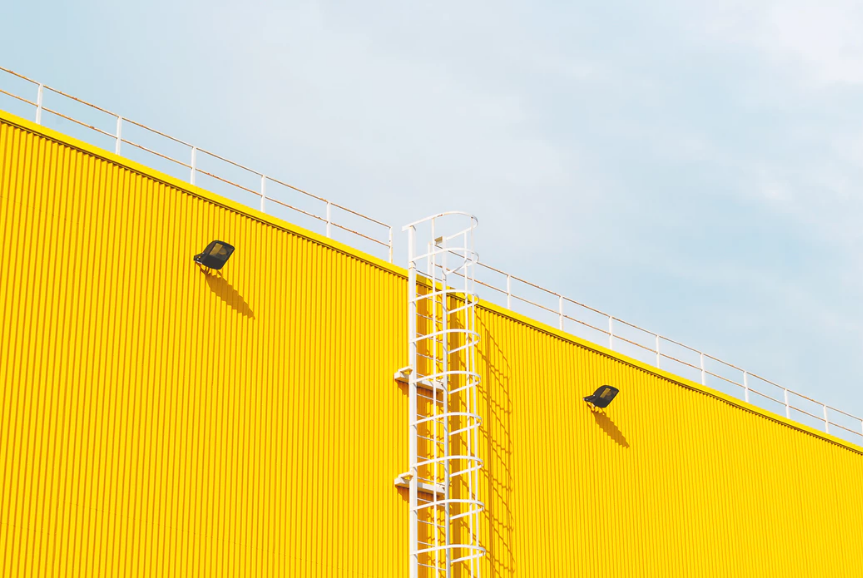The Process of Exterior Painting on Michigan Industrial Buildings

A building’s exterior acts as the face of the company or business. Customers approaching your Michigan company or potential tenants will always judge the building by its exterior. No matter how excellently painted and furnished it may be on the inside, its outer walls determine its worth. A professional paint job on the walls will attract more customers than a faded one. People associate faded walls with inferior quality.
Industrial Surfaces
Industrial buildings vary in function and size; each is constructed differently. Unlike residential homes where most walls are made of concrete, industries have different types of surfaces. They range from traditional concrete or bricks to steel, plastic, metal and some combine more than one component. They can include tanks, silos and even pipes. The painter you select should know how to handle your surface type.
Preparing surfaces
If you imagine that you do not need to prepare your surface as the paint will hide all the dirt, think again. Surface preparation is 50% of the entire painting process, leaving it out or doing it shoddily is negligent. For a long-lasting and high-quality coat of paint, the surface must be adequately prepared before painting starts. This critical process differs depending on the type of surface. Surface preparation techniques include:
Power washing
Power washing also commonly referred to as pressure washing is one way of how you can clean your exterior walls before the painting process kicks off. Use a pressure washer to get rid of a variety of dirt that may have accumulated in your walls over time. Dust, mud, moss, loose paint have no chance with this pressure washer. It’s usually powered either by electricity or gas. Adjust the pressure levels depending on how dirty the surface is. Go high if you need heavy cleaning with pressure levels of up to 2500psi, for moderate and low cleaning jobs; use a range of 1500-1800 psi. The high pressure is desirable to remove paint but may cause severe harm if it hits the wrong target. Very high pressure can even damage the wall, start with low and adjust moderately. Ensure that the person operating the power washer is competent and can comfortably handle the nozzle and hose. Industrial buildings are of varying heights, using a power washer on a ladder may be problematic for some.
It is recommended to use a top-down approach when pressure washing to keep pressured surfaces clean. Don’t hold the nozzle near to the surface as it may also cause damage. Depending on the extent of stains or dirt, some will use soap or detergent with the pressure washer. Select mild detergents, soaps with high PH levels may damage walls. Rinse with cold water before the soap dry on your surface. It is also advisable to use a commercial hose with the power washer when preparing industrial exteriors.
Chemical cleaning
There are different types of chemical cleaning.
Steam cleaning uses high-pressure steam to remove grime and dust. Detergents are added to remove stubborn oil stains.
Alkaline and detergent cleaning method combines hot water, detergent and an alkaline component such as sodium to clean surfaces; it removes dirt, acid and salty elements from the surfaces. It is more efficient than steam cleaning. Protect yourself as the chemicals may be harsh on your bare hands.
Power tool cleaning
This involves using powered hand tools. It is suitable for removing rust, loose paint, loose chalk and mill scale. Use powered wire brushers, grinders and sanders to do the job quickly. Ideal for industrial outer walls which are larger than a residential building, they do a better job compared to hand tool cleaning. Like any powered tool be careful to ensure the safety of the user and that you do not damage the walls being cleaned. Moderation is the keyword.
Hand tool cleaning
Hand tool cleaning, unlike power tool cleaning, does not require using any powered equipment to clean the surface. The hand wire brushers, grinders and sanders are only suitable for small surfaces. In industrial buildings, it may be not viable and time consuming to use this method unless working on small surfaces that require specialized attention.
Abrasion
Another method of preparing surface is abrasive cleaning. The surface is blasted using high pressured air with abrasives such as sand, grit or slag. The abrasives can also be dispensed using other means other than high-pressure air. This method is highly efficient and effortlessly removes mill scale, loose paint, and rust. Select nozzle and abrasive materials depending on the size of surface and the dirt is removed. Just like the pressure washer adjust the nozzle accordingly.
